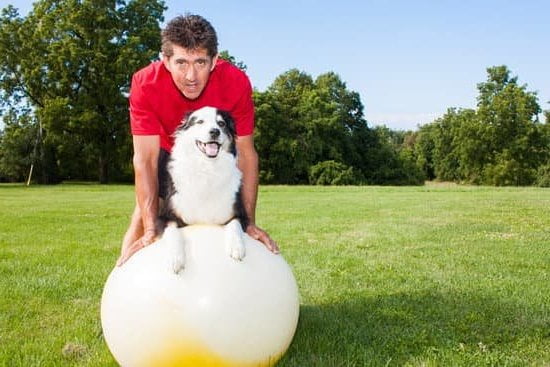One of the most common issues dog owners face is their dog peeing in their crate. This can be a difficult behavior to break, but with patience and perseverance, it can be done.
The first step is to determine why your dog is peeing in their crate. There are a number of reasons why this might be happening, including:
The dog is not housebroken
The dog is anxious or afraid
The dog is being punished
There is something in the crate that is attracting the dog
The crate is too large or too small
Once you have determined the root cause of the problem, you can begin to address it.
If the dog is not housebroken, you will need to start by housetraining them. Crate training is an essential part of this process, as it will help to keep the dog confined to a specific area where they are less likely to pee.
If the dog is anxious or afraid, you will need to work on building their confidence. One way to do this is to gradually introduce them to the crate. Start by putting the crate in a room where the dog spends a lot of time, such as the living room. Leave the door open and let the dog explore on their own. Once the dog is comfortable with the crate, you can start to close the door for short periods of time. Gradually increase the amount of time the dog spends in the crate until they are comfortable being confined for long periods of time.
If the dog is being punished, you will need to stop punishing them and start rewarding them instead. When the dog does not pee in their crate, reward them with a treat or a pat on the head. This will help to reinforce the behavior you want them to exhibit.
If there is something in the crate that is attracting the dog, you will need to remove it. This could be anything from a toy to a bed.
The crate size can also play a role in whether or not a dog pees in it. If the crate is too large, the dog may feel like it can go anywhere in the crate and choose one spot to pee. If the crate is too small, the dog may feel cramped and uncomfortable, which could lead to them peeing in it.
By taking all of these things into account, you can begin to train your dog not to pee in their crate. It will require some patience and perseverance, but with time and effort, it can be done.
Crate Training My Dog
Crate training a dog is a great way to help them feel secure and comfortable in their surroundings. Dogs are den animals and prefer having their own space. Putting your dog in a crate when you are unable to watch them can help to prevent them from getting into trouble and also makes housetraining them much easier.
There are a few things you need to keep in mind when crate training your dog. The crate should never be used as a punishment and should always be associated with positive things, such as treats and praise. The crate should also be big enough for your dog to stand up, turn around, and lie down in.
To crate train your dog, start by putting them in the crate for a very short amount of time and gradually increase the amount of time they spend in the crate. Make sure your dog is always comfortable and has access to water. If your dog is having trouble adjusting to the crate, try putting a toy or a treat in the crate to make it more appealing.
Diggs Dog Crate Training Tool
Diggs is a dog crate training tool that can be used to help train your dog to stay in their crate. The crate can also be used as a place for your dog to sleep and relax in. The crate is made of sturdy plastic and has a locking door to keep your dog inside. The crate also comes with a removable tray for easy cleaning.
The Diggs dog crate is a great training tool for dogs that are not yet house trained or for dogs that have a tendency to wander. The crate can be used to confine your dog in a small area until they are house trained. The crate can also be used to keep your dog from wandering off when you are not able to keep an eye on them.
The Diggs dog crate is easy to assemble and easy to clean. The crate is also lightweight and can be transported easily. The crate is a great option for dogs that are not able to be trained with a traditional dog training collar.
How To Crate Train Your Dog In 7 Days
Crate training your dog can be an extremely beneficial tool for both you and your pet. A crate can provide a safe and comfortable place for your dog to rest and relax in, and can also be used as a training tool to help your dog learn basic obedience commands.
If you are new to crate training, or if you would like to brush up on your skills, here are a few tips for how to crate train your dog in just seven days:
1. Start by introducing your dog to the crate. Place the crate in a quiet and comfortable location in your home, and allow your dog to explore it at his own pace. Some dogs will be immediately comfortable going in and out of the crate, while others may need more time to get used to it.
2. Begin by feeding your dog his meals inside the crate. This will help him to associate the crate with positive things, such as food and security.
3. Once your dog is comfortable going into and out of the crate, begin to close the door for short periods of time. Start with just a few seconds at first, and gradually increase the amount of time that the door is closed.
4. Once your dog is comfortable spending short periods of time in the crate with the door closed, begin to use the crate as a place to confinement him when you are not able to supervise him. For example, if you are going to be busy in the kitchen preparing dinner, put your dog in the crate so that he will be safe and out of the way.
5. Use positive reinforcement to encourage your dog while crate training. Praise him when he goes into the crate willingly, and offer a treat or toy as a reward when he stays in the crate for a period of time.
6. If your dog begins to whine or bark while in the crate, do not give in and let him out. This will only reinforce the behavior and make it more difficult to train him to stay in the crate. Instead, wait until he is quiet before letting him out.
7. Crate training can be a slow process, so be patient and consistent with your dog. With a little time and patience, you will have a happy and well-behaved dog who enjoys spending time in his crate.
How To Train Dog To Sleep Outside Of Crate
Do you have a dog that barks and whines incessantly when left alone in a crate? If so, you’re not alone. Many dog owners find themselves in this situation. The good news is that there is a way to train your dog to sleep outside of the crate. The key is to be patient and consistent with your training.
The first step is to start by gradually conditioning your dog to sleep outside of the crate. Begin by leaving the door to the crate open and placing your dog’s bed or a blanket in the vicinity of the crate. Gradually move the bed or blanket closer to the crate until your dog is sleeping right next to it. Once your dog is comfortable sleeping next to the crate, you can start to slowly wean them off of the bed or blanket.
The next step is to start putting your dog in the crate for short periods of time. Begin by putting your dog in the crate for 5-10 minutes and then gradually increase the amount of time. Once your dog is comfortable being in the crate for extended periods of time, you can start to slowly wean them off of the crate altogether.
It’s important to be patient and consistent with your training. If you are patient and consistent, your dog will eventually learn to sleep outside of the crate.

Welcome to the blog! I am a professional dog trainer and have been working with dogs for many years. In this blog, I will be discussing various topics related to dog training, including tips, tricks, and advice. I hope you find this information helpful and informative. Thanks for reading!





